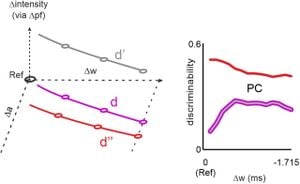BMW is doubling down on its commitment to performance by announcing it will continue to produce its powerful V8 engines, as demand remains strong, particularly in markets like the United States and the Middle East. Oliver Weber, BMW's head of product management, stated, "There are markets such as the US [United States] and Middle East where you cannot replace V8s with inline-six hybrids." This decision reflects BMW’s strategy of maintaining production of internal combustion engines (ICE) alongside its growing electric vehicle lineup, ensuring the brand caters to diverse consumer preferences.
The latest embodiment of this strategy is the newly launched 2025 BMW M5, available in both sedan and wagon body styles. This model features a 4.4-litre twin-turbo V8 paired with an electric motor and battery pack, delivering a formidable combined output of 535 kW and 1000 Nm. The performance specification continues to resonate with enthusiasts, spotlighting BMW's commitment to high-performance motoring.
Meanwhile, Mazda has confirmed its plan to reintroduce the flagship BT-50 Thunder trim level, which was noticeably absent from the latest BT-50 lineup. According to Vinesh Bhindi, Mazda’s managing director, "That's my plan," indicating strong intentions to bring back the popular variant. The Thunder model, which originally boasted off-road enhancements and accessories, had been well-regarded for its rugged aesthetics and functionality, positioning it competitively against other high-end utes like the Nissan Navara Warrior.
Despite the absence of the Thunder at the launch of the facelifted BT-50, Mazda reassures consumers of its commitment to delivering options catered to their needs, leveraging over 100 genuine accessories available for current BT-50 buyers. The updated BT-50 lineup is already available at Australian dealerships, signaling Mazda's strategic pivot as it fine-tunes its offerings.
On the pricing front, most Nissan models, excluding the Leaf electric hatch, have seen price increases of up to $520, effective January 1, 2025. This rise influences models like the Juke, Qashqai, and X-Trail, yet Nissan is simultaneously rolling out cashback incentives across numerous vehicles, potentially saving customers thousands of dollars. A Nissan Australia spokesperson noted, "like many others in the industry... we applied... price rise," indicating market-wide trends of price adjustments as manufacturers adapt to fluctuated economic conditions.
The introduction of the new 10-year/300,000-kilometre warranty for Nissan vehicles sold from January 1, 2025, adds another layer of appeal, aiming to bolster consumer confidence amid these changes.
Turning attention to hybrids, Kia is setting the stage for future plug-in hybrid electric vehicles (PHEVs) as it navigates the new Vehicle Efficiency Standards (NVES) established by the Australian government. Currently, the only PHEV offered by Kia is the Sorento GT-Line, priced at $84,660 before on-road costs. Roland Rivero, Kia’s General Manager of Product Planning, emphasized the importance of PHEVs, asserting, "under NVES, the plug-in hybrid definitely does help substantially," as Kia looks to broaden its offerings under changing regulations.
Rivero’s comments suggest potential PHEV introductions across other models, including the Sportage and new generation Sorento and Carnival, as Kia seeks to meet market demand without compromising its reputation for value.
Meanwhile, BYD is gearing up to showcase its luxury plug-in hybrid SUV, the U8, currently undergoing testing across Australia’s outback. The U8 stands out with features such as being able to ‘swim’ and execute 360-degree ‘tank turns.’ This vehicle is part of BYD’s Yangwang luxury sub-brand, though it may rebrand for the Australian market. Reportedly, the U8 can deliver impressive outputs of 880 kW and 1,280 Nm, presenting itself as a formidable contender within the luxury SUV segment.
The U8's plug-in hybrid setup includes quad electric motors and generates power from its 2.0-litre turbo petrol engine, promising remarkable versatility and environmental performance. Company insiders suggest this model aligns with BYD's strategy to cement its presence within the Australian market, following the recent successful launch of the BYD Shark.
Looking forward, the 2025 Melbourne Motor Show, set to occur on April 5-6, 2025, promises to bring together 23 manufacturers showcasing innovative designs and new models, including the anticipated 2025 Kia Tasman ute. This is the first Melbourne Motor Show since 2009, with organizers asserting the event will feature "nine new cars"—a significant draw for car enthusiasts eager to see the latest automotive advancements.
The variety of brands represented, ranging from established names like Isuzu Ute and Porsche to new entrants from China, signifies the changing dynamics of the Australian automotive market. Enthusiasts can expect to encounter exciting developments as manufacturers debut next-generation models and technological advancements.
Overall, as the Australian automotive industry adapts to regulatory changes and shifting consumer preferences, these updates reveal both challenges and opportunities for leading brands like BMW, Mazda, Nissan, Kia, and BYD, all vying for their share of the competitive market.



